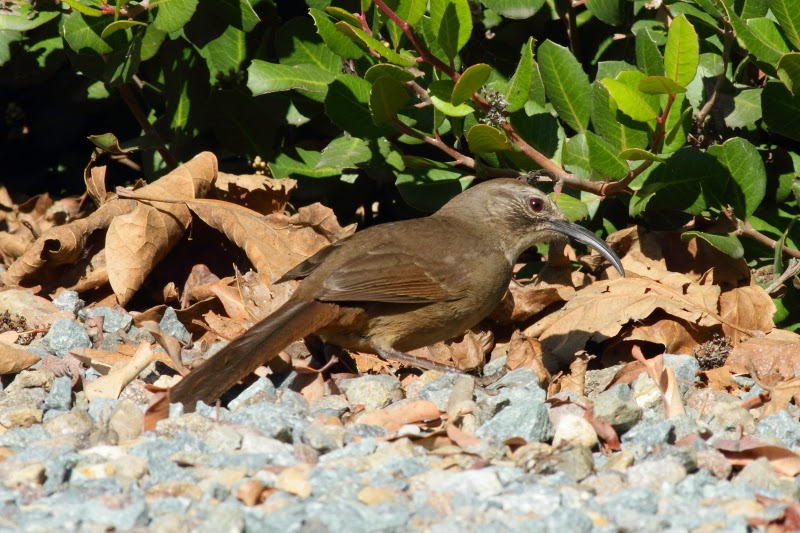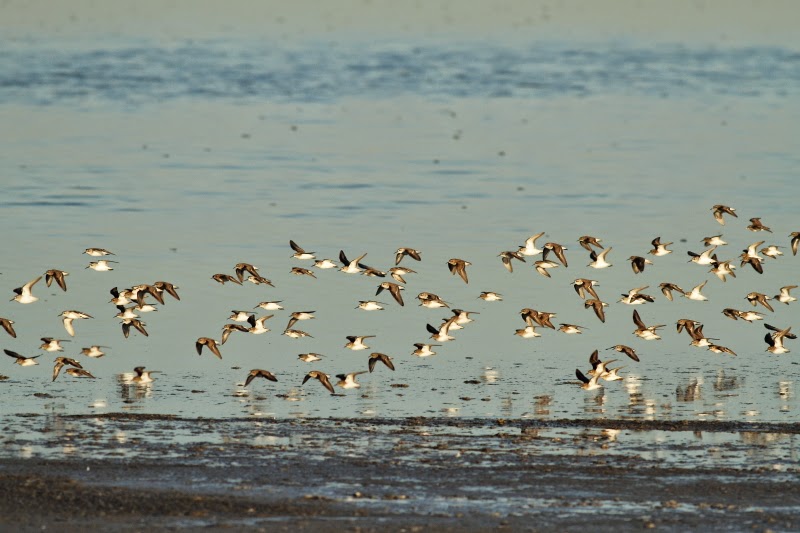We took a trip up to Tijuana River Estuary first thing in the morning. It was extremely foggy here to start with but it gradually burned off. The main target was the recently split Ridgway's Rail. This species has been split from Clapper Rail. We managed to see a few of the rails in the saltmarsh and even had two swimming across a large tidal creek. The photos are up to much due to the distant and the fog. It was a great spot for other wetland birds such as Long-billed Curlews, Hudsonian Whimbrels, Marbled Godwits, Willets, Reddish Egret and Little Blue Heron. Off the sand dune we also had a nice male White-winged Scoter in amongst the many Surf Scoters and divers.
We were now had come to an end of our time along the Pacific Ocean and after Tecolote we started to head back East over to Salton Sea. On route we had a rest stops and at one of these - Jacumba we had good views of Roadrunner and Cactus Wren in the immediate environ of a petrol station along with the US - Mexican border fence only a short distance away.
In the last one or two hour of daylight we arrived at the amazing Salton Sea. This inland saline "sea" is an extremely productive site for waterbirds. Ruddy Ducks, Black-necked Grebes and Ring-billed Gulls were probably the most numerous species. We would spent the next two nights in Brawley town.
 |
| "Beldings" Savannah Sparrow |
 |
| Ridgway's Rails |
 |
| Ridgway's Rail |
 |
| Ridgway's Rail |
 |
| Western Meadowlark |
 |
| Audubon's Warbler |
 |
| Audubon's Warbler |
 |
| Black Phoebe |
 |
| California Thrasher |
 |
| California Thrasher |
 |
| California Thrasher |
 |
| California Towhee |
 |
| Cedar Waxwing |
 |
| Cedar Waxwing |
 |
| Northern Mockingbird with damaged upper mandible. |
 |
| Song Sparrow |
We were now had come to an end of our time along the Pacific Ocean and after Tecolote we started to head back East over to Salton Sea. On route we had a rest stops and at one of these - Jacumba we had good views of Roadrunner and Cactus Wren in the immediate environ of a petrol station along with the US - Mexican border fence only a short distance away.
 |
| Cactus Wren |
 |
| Greater Roadrunner |
 |
| Greater Roadrunner |
 |
| Greater Roadrunner |
 |
| US - Mexico border-fence |
In the last one or two hour of daylight we arrived at the amazing Salton Sea. This inland saline "sea" is an extremely productive site for waterbirds. Ruddy Ducks, Black-necked Grebes and Ring-billed Gulls were probably the most numerous species. We would spent the next two nights in Brawley town.
 |
| Black-necked Stilts |
 |
| Black-necked Stilt |
 |
| Burrowing Owl beside it's burrow. |
 |
| Burrowing Owl |
 |
| Brown Pelican |
 |
| American White Pelican |
 |
| Double-crested Cormorant |
 |
| Double-crested and Neotropic Cormorant |
 |
| Double-crested and Neotropic Cormorant |
 |
| Least and Western Sandpipers |
 |
| Least and Western Sandpipers |

No comments:
Post a Comment